
Hyundai i20 N Line Gets A New Starry Night Paint Option
- Mar 10, 2022
- Views : 3228

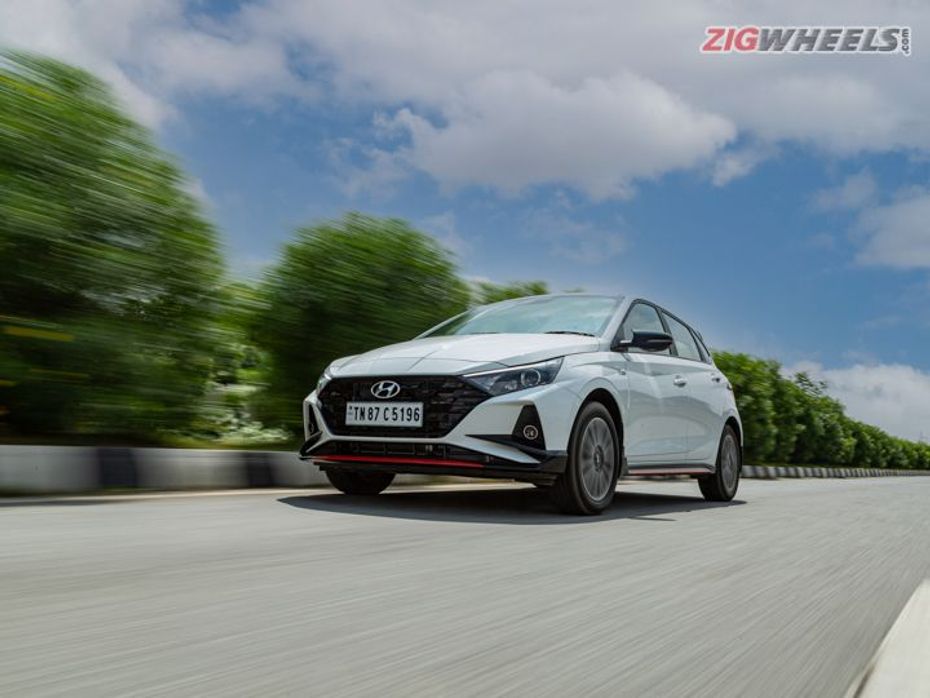
A new, exciting chapter in Hyundai Motor India’s story has just kicked off. The first of its N series of cars has hit select Hyundai showrooms across the country. Hyundai’s N cars are born from their racing experience in the WRC and Touring Car championships and are developed in their Namyang R&D centre and tuned at the famous Nurburgring. And while the i20 N Line isn’t the full blown N car that some of us were hoping for, it’s definitely a step in the right direction. Should it prove to be popular, more sporty Hyundais are sure to follow in its footsteps. Fingers crossed.
So rather than knock it for not packing a bigger punch under the hood, we're going to focus on what makes this a fun hatchback you could be proud of, as well as highlighting some of the points you may not want to be bragging about.
Visual Cues

The i20 N Line packs in heaps of cool visual aids over the already dapper i20. The most noticeable are the red accents on the new front bumper and the side skirts that especially stand out on this deep blue car. The grill is also new and features a chequered flag-inspired design. The door handles have also become body coloured as compared to the chrome ones on the standard i20. The new 16-inch alloys look okay, but we wish Hyundai could have upsized them to 17s for some added bragging rights.
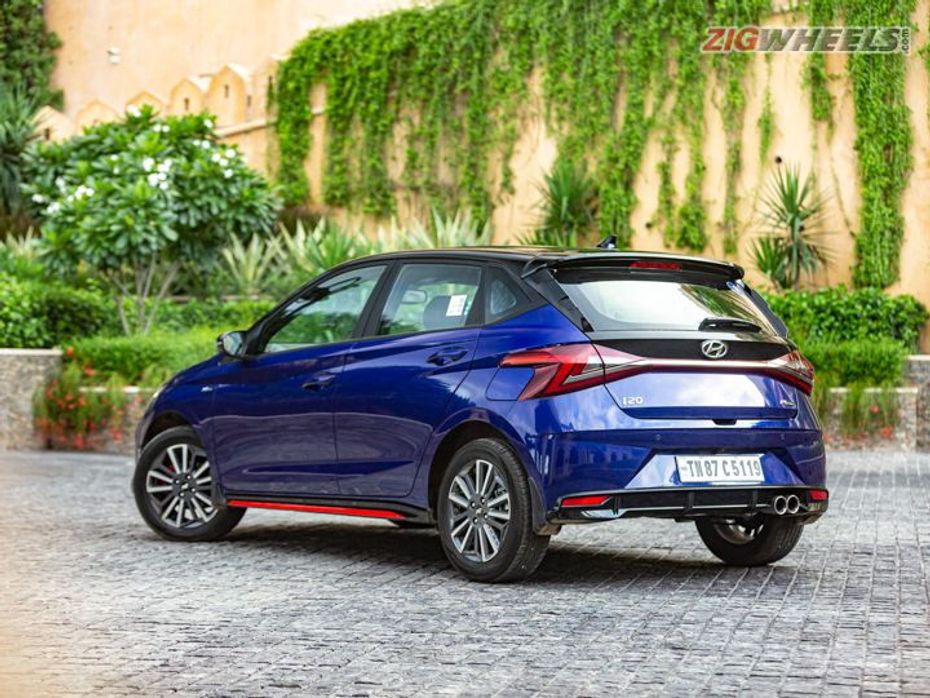
The bootlid sports a larger, more exaggerated wing and the rear ‘Z’ shaped taillights just are as arresting as before. But the biggest visual and aural change to the rear of the car has to be the dual exhaust tips. They are chunky and are quality items that will outshine any aftermarket job in terms of their quality and sound, but we’ll get to that later.
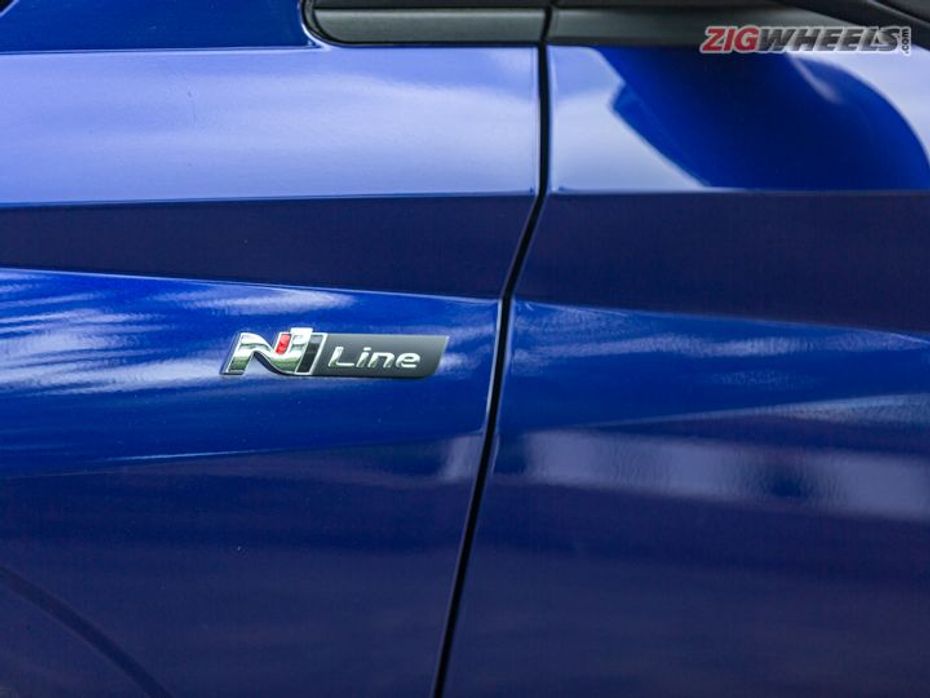
There’s also plenty of N Line badging to ensure that everyone knows that your ride is a bit special. We counted as many as eight badges on the outside. Two on both quarter panels, one on the new grill, one on the tailgate, plus one in the centre caps of each of the four wheels.
Splashes of red
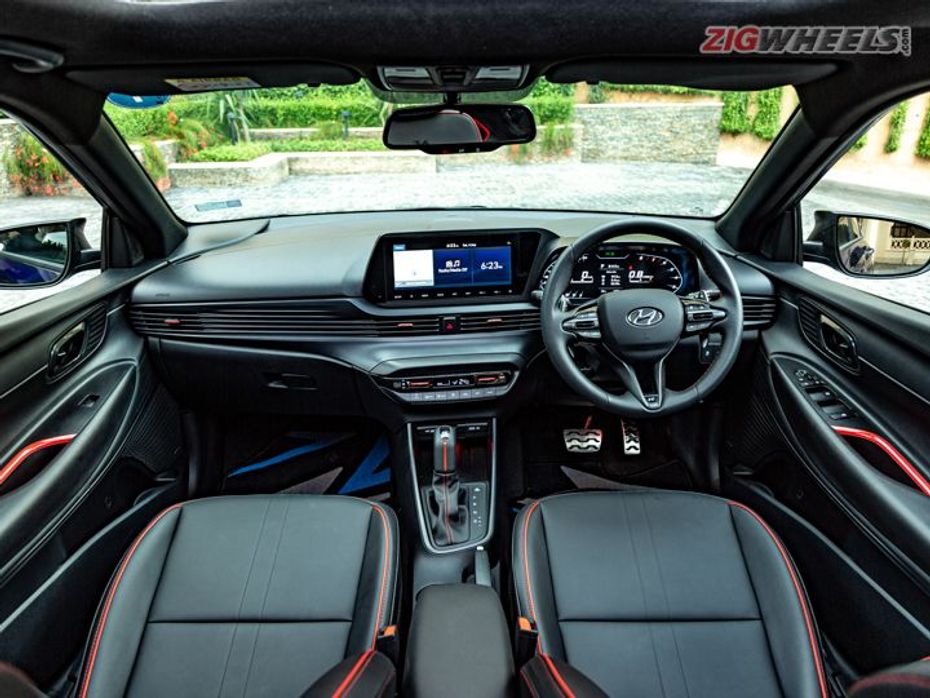
The interiors also give owners a lot to be proud of. There’s red accents everywhere you look - on the AC vents, and controls, on the door panels as well as on the piping of the leatherette seat covers. Now these accents are also available on the turbo-equipped i20 standard models but the N Line sets itself apart by offering red ambient lighting instead of the blue light which comes as standard. The bigger changes, though, are the all-new steering wheel, which feels substantial to hold and features large paddle shifters with the DCT. The paddles are plastic but still feel substantial and even the steering-mounted controls have a nice tactile feel to them. The gear levers are also different for both the iMT and The DCT equipped cars, with the iMT one looking quite sporty and feeling good in the palm of your hand. There’s also N Line badging on the steering wheel, gear knob and the seats.
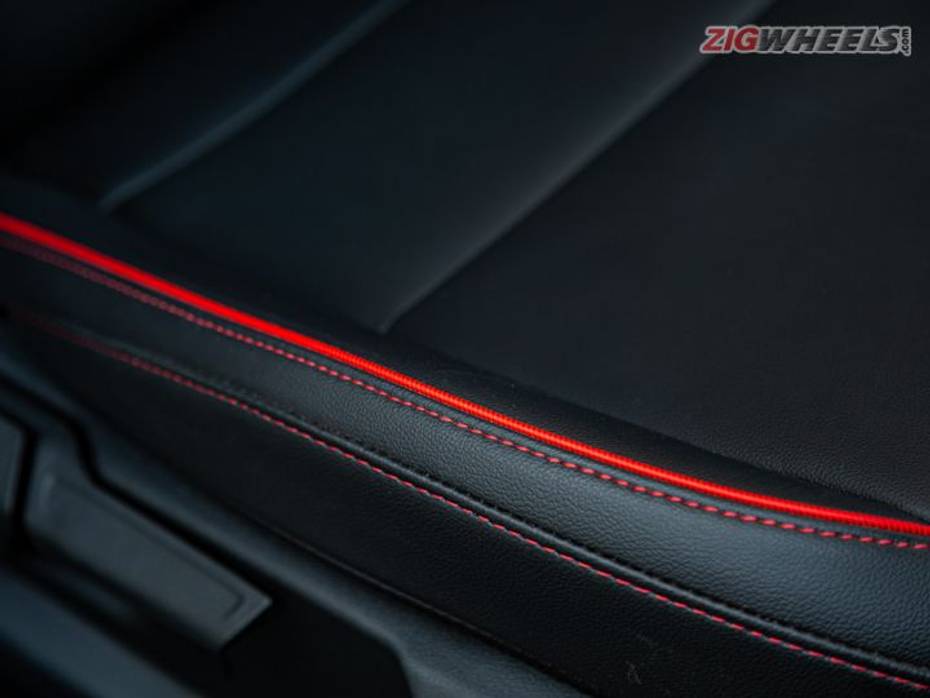
The feel of the interiors is exactly the same as the standard car, save for the aforementioned steering wheel and gear knob. So there’s a mix of hard and soft plastics and lots of textures to go around. Space and comfort haven't changed either so to read about how the standard car is in terms of comfort and practicality, check out our first drive review here.
Upgraded features
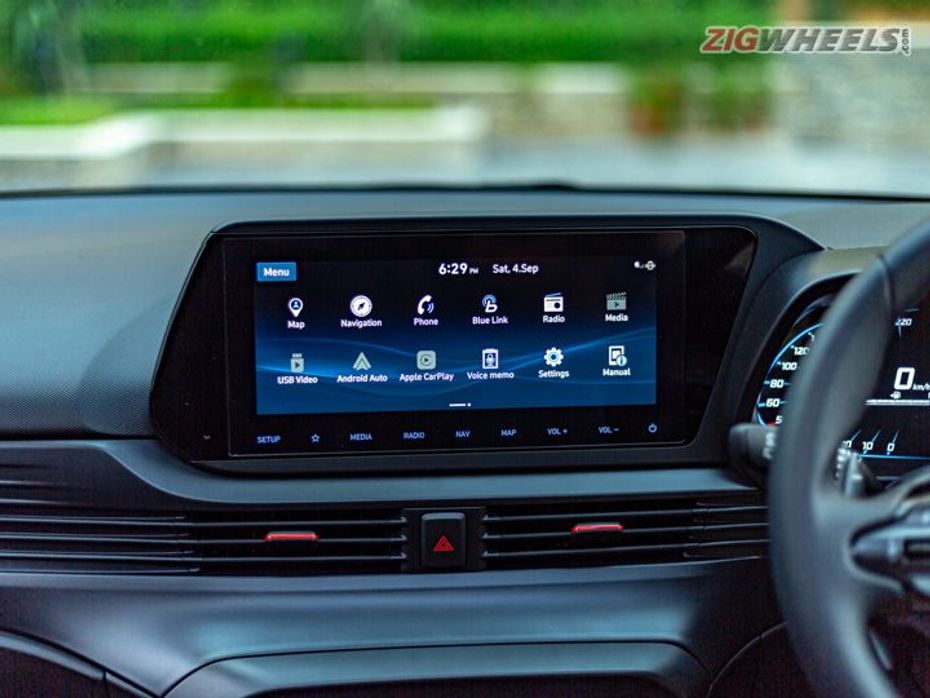
Hyundai have also added in a few more items to the features list. But they are not quite the visible type, the perfect excuse to do some more showing off. The first is the sunroof, which may look like the same unit as the standard car but it’s now voice activated. So punching the voice command button on the steering wheel and saying “open sunroof” is all that’s needed to win some approving glances from your friends. The driver's side window has also been given the same treatment and what better way to reveal this feature than at the first toll booth on that first road trip? You can even ask the system for the match score and it will tell you the score of your favourite matches. Unfortunately, we only watch motorsports so we didn’t know what matches to ask about.
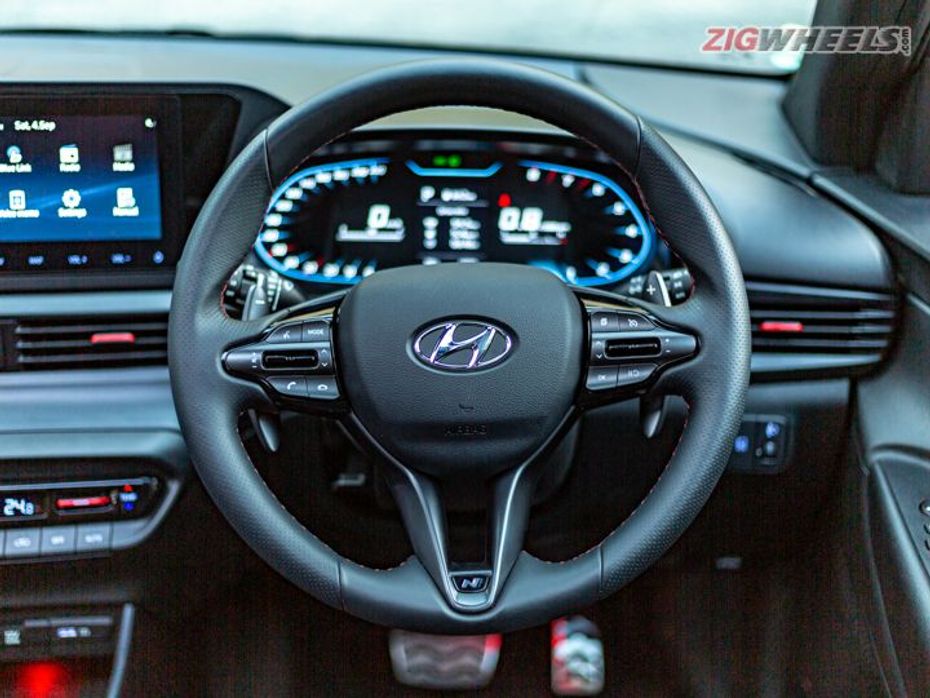
Another one that's more useful to the driver is the new IRVM which is now auto dimming compared to the manual operation on the standard car. These are clever little upgrades that were easy for Hyundai to integrate into the existing hardware and either adds value to the driving experience or are things that you’d be proud to flaunt.

The rest of the features list stays the same. So there’s a 10.25-inch touchscreen infotainment with wireless Android Auto and Apple CarPlay, digital MID, 7-speaker Bose sound system, cruise control, cooled glove box and the list goes on. It was the most feature rich car in the segment and with these additions it’s even more secure on it’s lofty perch.
And finally all those add on bits, like the side skirting, exhaust, new wheels and rear calipers do add up to the i20 N Line carrying a bit more weight, around 8-10kgs more. Not a lot of difference but not something you’d want to highlight.
Driving manners to match?
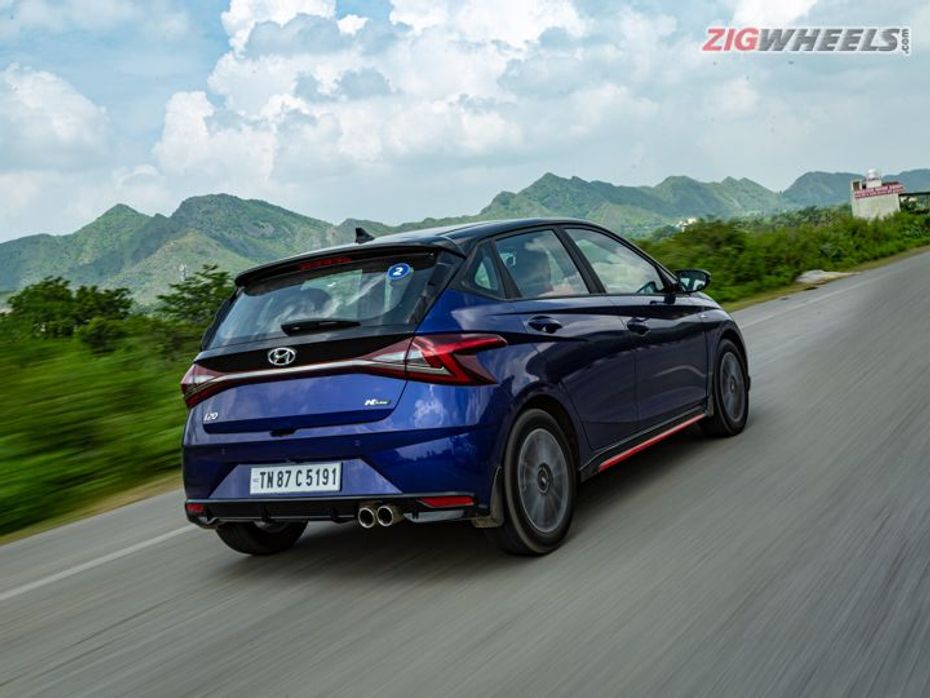
We started the driving experience with the DCT and what better way to start a drive in a sporty car than to do a little launch off the line. To protect the DSG gearox, the software doesn’t allow you to build revs before a launch. And this means that the initial acceleration is a little sluggish but soon that turbo spools up and the strong midrange kicks in. And you want to stay in that midrange, keeping the engine spinning between 3000rpm and 4500rpm. Post this the engine loses steam and it’s better to shift up a gear.
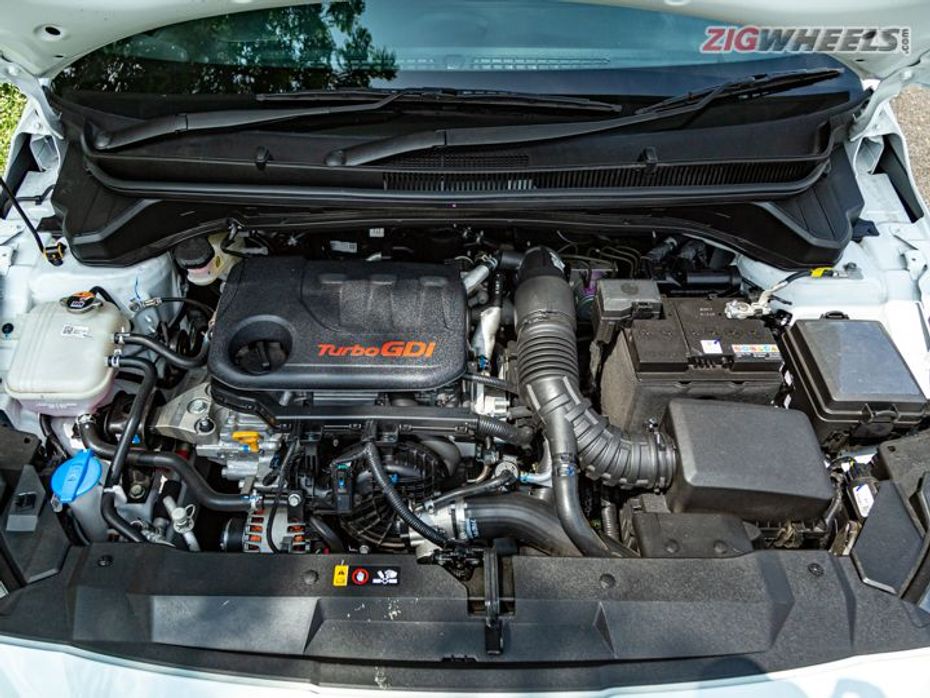
It’s a very familiar feeling and that’s because the engine is exactly the same as the standard car - the one downer to the i20 N Line. It’s not really slow, though, and when we tested the standard car we managed a timing of 10.88 seconds from 0-100kmph, so we’d expect this to be in that same ballpark. The quickest in the segment is still the Polo TSI with it’s manual transmission clocking 9.66 seconds to 100kmph while the Polo GT automatic does it in 10.79 seconds.
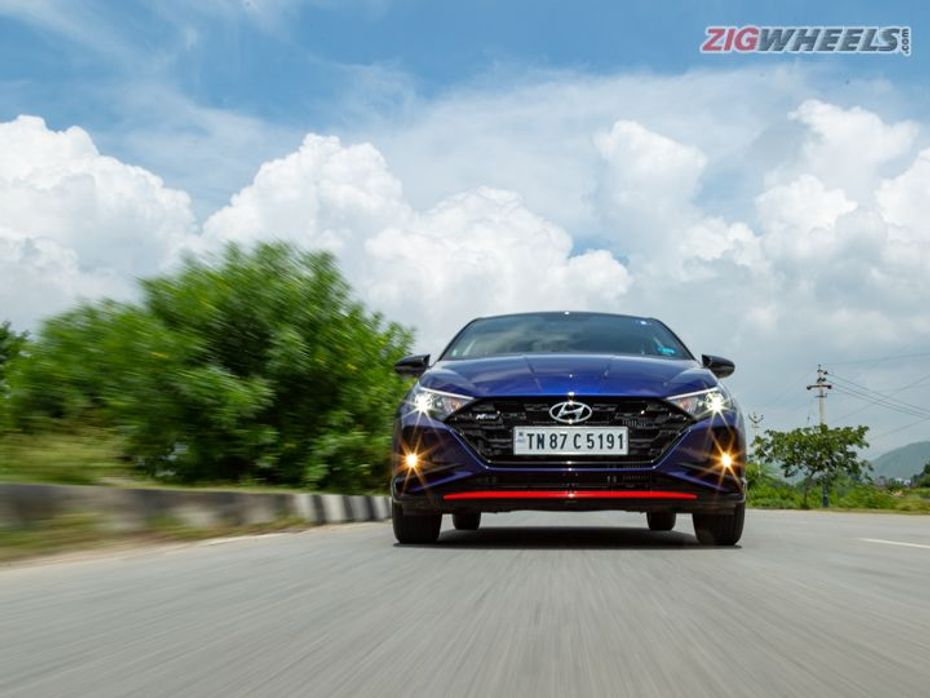
But there have been some positive changes to the dynamic package as well. The steering weight has been increased to add a sportier feel to the driving experience but it's a progressive change so at lower speeds the added weight wasn’t quite as apparent. But on the highway it’s quite clear. The dead spot also feels different so the car feels a little more sensitive to small changes too. Overall it feels more positive and direct than the standard car at highway speeds. We’ll have to spend more time with the car at city speeds and around corners (a rare commodity in Udaipur) to see how this feels at slower speeds.
The other change is to the suspension, whose damping force has been increased by 30%. This means that under acceleration, braking and turning into corners the car stays more flat. There’s also very little movement from the suspension at speed on the highway as well. As expected in the city and over bad roads you do feel the bumps a little more but again we would like to spend more time with the car to give you a complete picture.
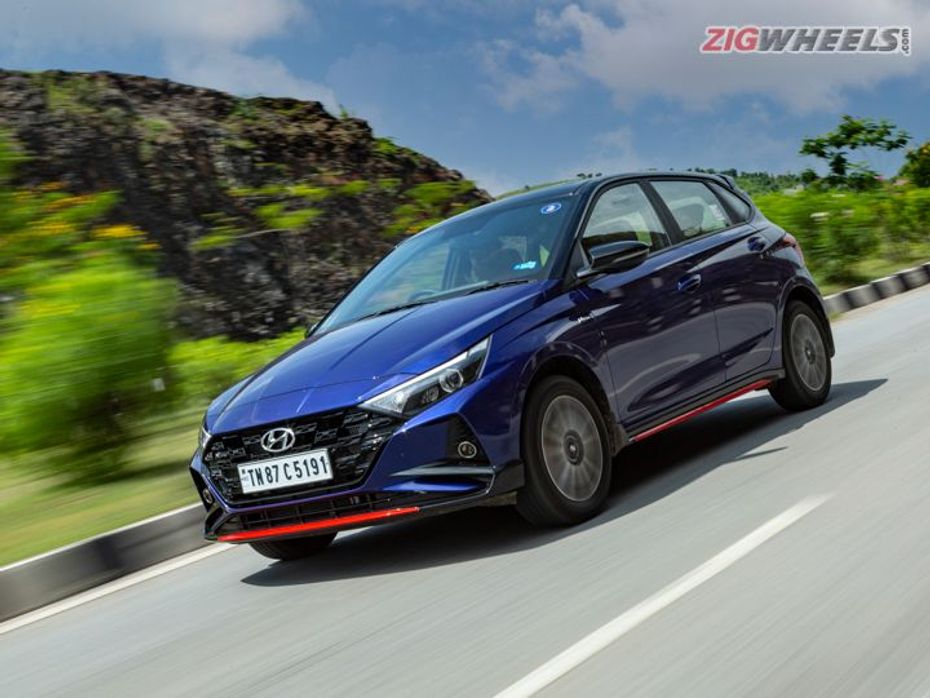
The other big change is the addition of rear disc brakes to the package. This has improved the initial brake bite which feels really strong now. It’s also a lot easier to get the ABS to kick in during hard braking. Hyundai says this knocks off 1.4 metres from the braking distance over the standard car. The standard car managed to come to a stop from 100kmph in just 40.84 metres so this could be one of the shortest--stopping hatches on the market.
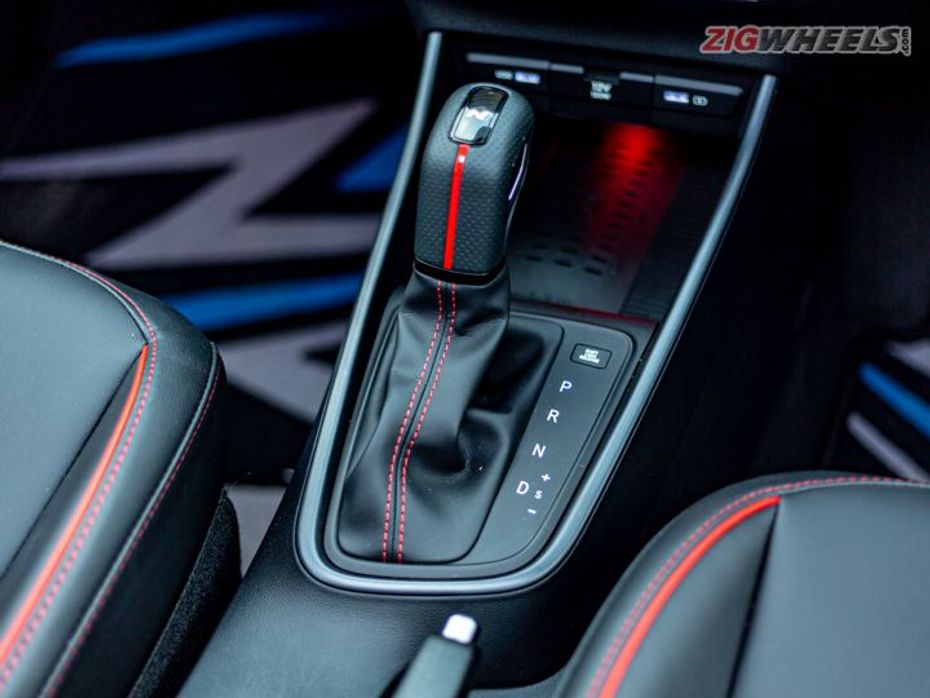
The IMT was also available to drive and while I really like the simplicity of a system that takes away the clutch pedal and still gives you complete control over the gears, I have to say I preferred driving the DCT equipped car. The DCT gives you similar control over gear changes with a manual mode and paddle shifters but adds the convenience of two drive modes. D softens throttle response and is great for driving around in the city and shifting to Sport just quickens up that throttle response for a more sportier experience.
Sings?

Yes and no. And that’s not really a bad thing. At a stand still and when you have your friends standing around the car, revving up the i20 N Line produces a fruity exhaust note. Distinctly not stock and very sporty. Still it’s not so loud that you're going to set off your neighbours spamming society chat groups about your bad behaviour. This is all good. But when you do get into the car and go for a drive it’s a lot quieter in the cabin. In fact with the din of city traffic or at highway speeds, you aren’t going to hear the exhaust at all until you really rev the engine up over 4000rpm. So there’s two sides to this coin and a louder droning exhaust would have been tiring on long highway trips and could also have overzealous cops trying to write you a challan or two. With the system the way it is, it's road trip ready and a quick midnight spin with the windows cracked open a little will give you all the aural stimulation you crave.
Pricey!
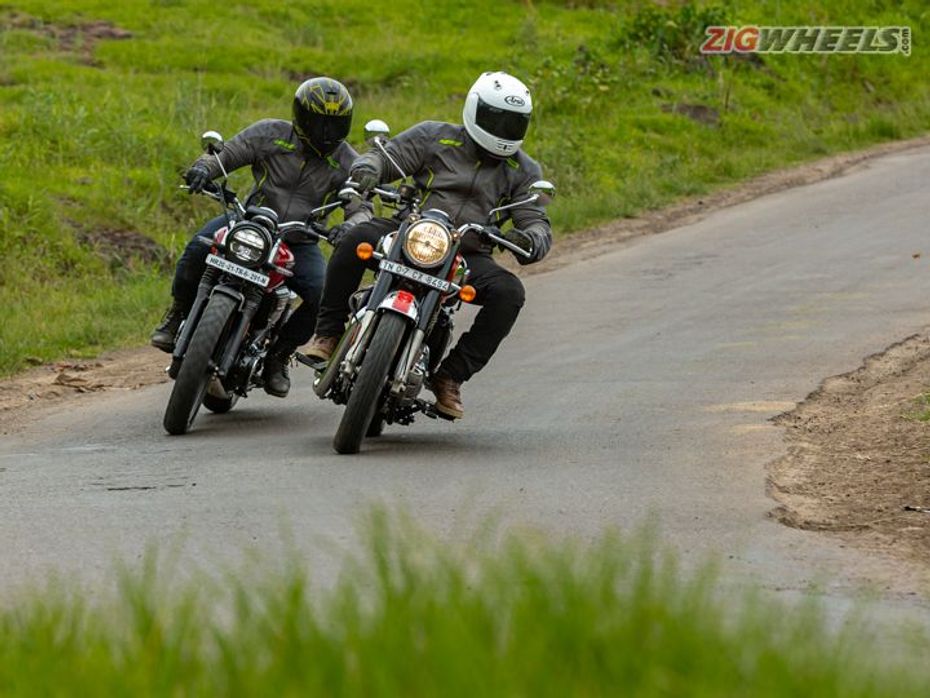
The easiest thing for you to brag about is how much you are paying over the stock i20 for all the upgrades. At 50k more, the introductory price jump really is a small change considering the number of cosmetic and functional bits the N Line gets. The quality of the badging, accents, new steering and gear knobs and those exhaust tips are top notch and tastefully executed too so you will really feel that the N Line is a steal.
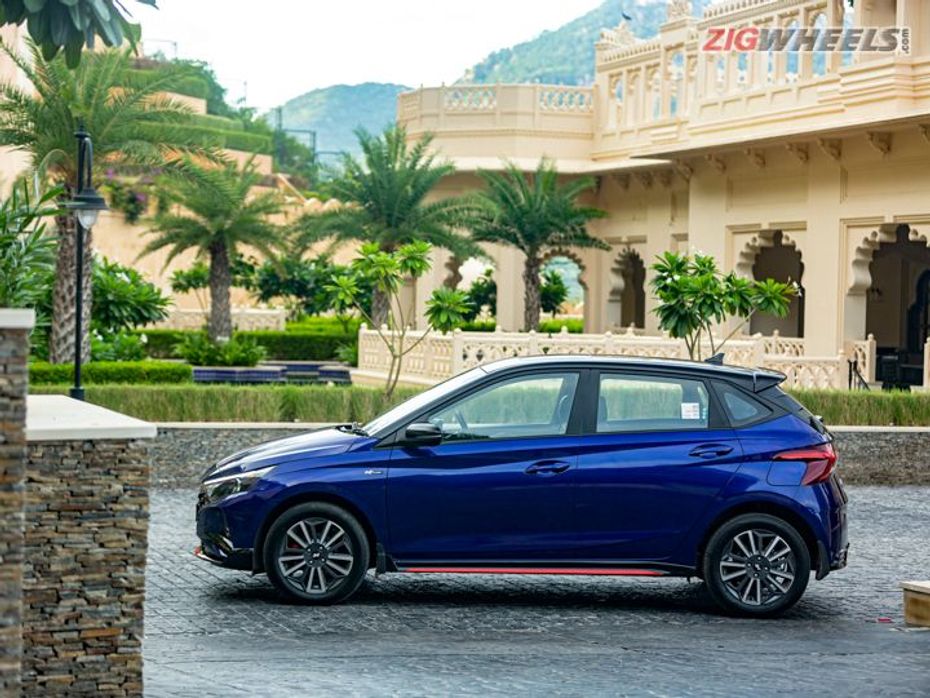
“Why not buy an SUV, bro?” is one objection that you are going to hear a lot! At 11.90 lakh (ex-showroom Delhi) the i20 N Line is the most expensive hatch in it’s segment. In fact it’s knockin on the door of many sub-4 metre crossovers that carry a little more status in some folks' books. On the other hand if you are set on the smaller profile of a hatchback then you won't find a more feature rich one either so you could easily counter your friends on this front.
Verdict
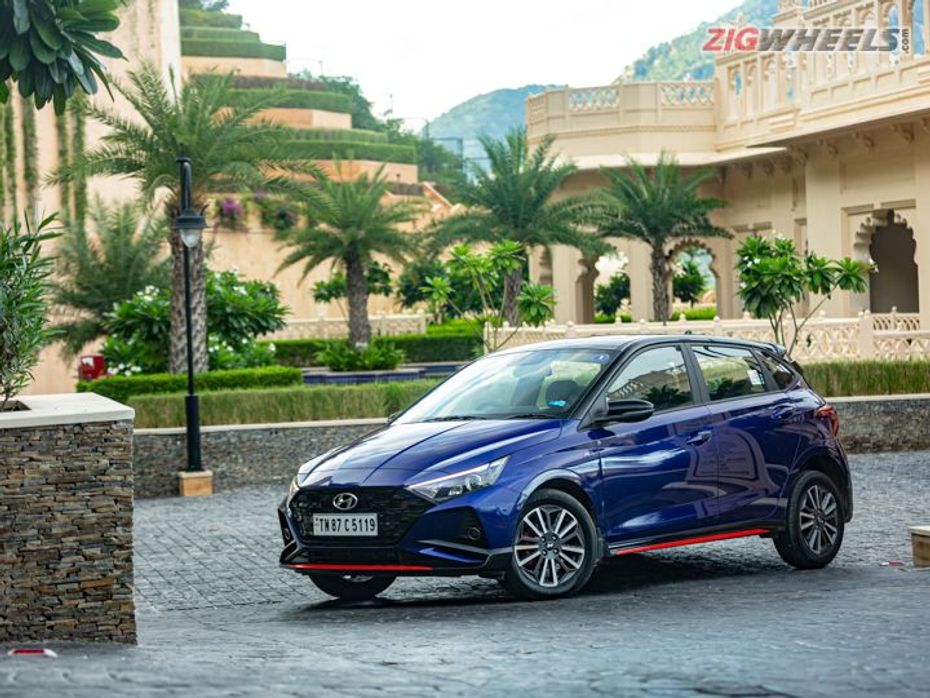
So there's not really much that knocks points off the i20 N Line. At its introductory price it's very little money for a heck of a lot of upgrades. Is it hot in terms of looks? Yes! And Hyundai didn't just stop there; the tweaks to the suspension and brakes do make a difference. Hot to drive? Well it could have done with a little more top end punch but considering that a hatch like this is most likely to be tearing through corners in the urban jungle, it's still a very pleasing driving experience. True petrol heads should know that it's still not the quickest car in the segment. But if your sights are set on an i20, this is definitely the enthusiasts' pick.

Hyundai i20 N Line Gets A New Starry Night Paint Option

The Hyundai Creta’s Midlife Facelift Breaks Cover In Design Sketches

Hyundai Is Offering Benefits Of Up To Rs 50,000 On Five Models This...

Hyundai Verna vs Honda City vs Skoda Slavia vs Volkswagen Virtus:...

2023 Hyundai Verna First Drive: Balance Achieved!

2023 Tata Nexon: Punching Above!
 Hyundai i20
Hyundai i20
 Hyundai Verna
Hyundai Verna
 Tata Nexon
Tata Nexon
India's largest automotive community
 Here Are Some Adrenaline Pumping Experiences From Auto Expo 2025 That You Should Not Miss!
Here Are Some Adrenaline Pumping Experiences From Auto Expo 2025 That You Should Not Miss!
 All You Need To Know About The Surprise Element At Auto Expo 2025: BMW iX1 LWB
All You Need To Know About The Surprise Element At Auto Expo 2025: BMW iX1 LWB
 Hyundai Creta Electric Reaches Dealerships, Here’s A List Of Its Pros And Cons Before You Check It Out!
Hyundai Creta Electric Reaches Dealerships, Here’s A List Of Its Pros And Cons Before You Check It Out!
 MG Showcases A PHEV At Auto Expo 2025: The MG HS PHEV
MG Showcases A PHEV At Auto Expo 2025: The MG HS PHEV
 Hyundai Creta
Rs. 11.10 Lakh
Hyundai Creta
Rs. 11.10 Lakh
 Hyundai Venue
Rs. 7.94 Lakh
Hyundai Venue
Rs. 7.94 Lakh
 Hyundai Verna
Rs. 11.07 Lakh
Hyundai Verna
Rs. 11.07 Lakh
 Hyundai i20
Rs. 7.04 Lakh
Hyundai i20
Rs. 7.04 Lakh
 Hyundai Creta Electric
Rs. 17.99 Lakh
Hyundai Creta Electric
Rs. 17.99 Lakh
 Maruti Swift
Rs. 6.49 Lakh
Maruti Swift
Rs. 6.49 Lakh
 Maruti Baleno
Rs. 6.66 Lakh
Maruti Baleno
Rs. 6.66 Lakh
 Maruti Wagon R
Rs. 5.54 Lakh
Maruti Wagon R
Rs. 5.54 Lakh
 Tata Tiago
Rs. 4.99 Lakh
Tata Tiago
Rs. 4.99 Lakh
 Maruti Alto K10
Rs. 3.99 Lakh
Maruti Alto K10
Rs. 3.99 Lakh